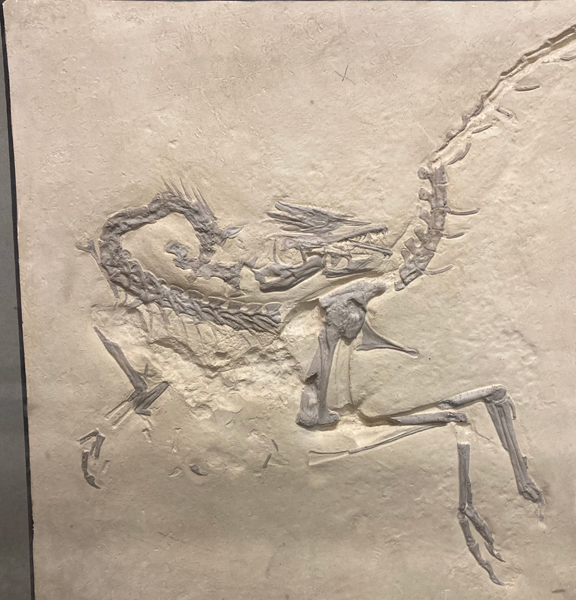Everything Dinosaur team members took a photograph of the Compsognathus fossil cast on display at the Manchester Museum of Natural History. This chicken-sized theropod is known from two specimens. One fossil was found in France, the other was found in Bavaria (Germany). The fossil cast represents the Bavarian specimen (BSP AS I 563).

Picture credit: Everything Dinosaur
The Famous Compsognathus Fossil Cast
The German specimen was collected from limestone deposits. This fossil came into the ownership of the amateur fossil collector Dr Joseph Oberndorfer. The famous German palaeontologist Johann A Wagner, was loaned the specimen to study. He penned a brief description in 1859. Wagner named this dinosaur Compsognathus longipes. Although at the time, Wagner did not recognise Compsognathus as a member of the Dinosauria. He thought it was a prehistoric lizard.
Numerous Compsognathus models and replicas have been manufactured. Perhaps, the most intriguing is the limited-edition Compsognathus dissection replicas made by Rebor.

The picture (above) shows the stunning and extremely realistic Rebor Oddities Compsognathus longipes preserved dissection specimen.
To view the Rebor range: Rebor Models and Figures.
A spokesperson from Everything Dinosaur commented:
“The fossil cast of a Compsognathus specimen is on display in numerous museums around the world. It is an iconic fossil of a theropod dinosaur.”
Visit the award-winning Everything Dinosaur website: Everything Dinosaur.






Leave A Comment